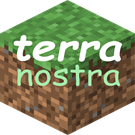Oderian language: Difference between revisions
No edit summary |
No edit summary |
||
| (One intermediate revision by the same user not shown) | |||
| Line 1: | Line 1: | ||
'''Oderian''' is a language spoken in [[Cassony]]. It is a western [[wikipedia:Indo-European languages|Indo-European]] language not specifically associated with any particular branch, but instead formed as a regional [[wikipedia:Lingua franca|lingua franca]]. | '''Oderian''' <span class="noexcerpt">(<small>Oderian:</small> Kmwadranā) </span>is a language spoken in [[Cassony]]. It is a western [[wikipedia:Indo-European languages|Indo-European]] language not specifically associated with any particular branch, but instead formed as a regional [[wikipedia:Lingua franca|lingua franca]]. | ||
It is thought the primary contributors of the language during its development were the early [[wikipedia:Germanic languages|Germanic]], [[wikipedia:Balto-Slavic languages|Balto-Slavic]] and [[wikipedia:Celtic languages|Celtic]] language groups. The language only existed as a living and developing creole between the 6th and 1st centuries BC, though it continued as a fossilized literary language from then onwards. | It is thought the primary contributors of the language during its development were the early [[wikipedia:Germanic languages|Germanic]], [[wikipedia:Balto-Slavic languages|Balto-Slavic]] and [[wikipedia:Celtic languages|Celtic]] language groups. The language only existed as a living and developing creole between the 6th and 1st centuries BC, though it continued as a fossilized literary language from then onwards. | ||
Latest revision as of 15:02, 15 October 2024
Oderian (Oderian: Kmwadranā) is a language spoken in Cassony. It is a western Indo-European language not specifically associated with any particular branch, but instead formed as a regional lingua franca.
It is thought the primary contributors of the language during its development were the early Germanic, Balto-Slavic and Celtic language groups. The language only existed as a living and developing creole between the 6th and 1st centuries BC, though it continued as a fossilized literary language from then onwards.
